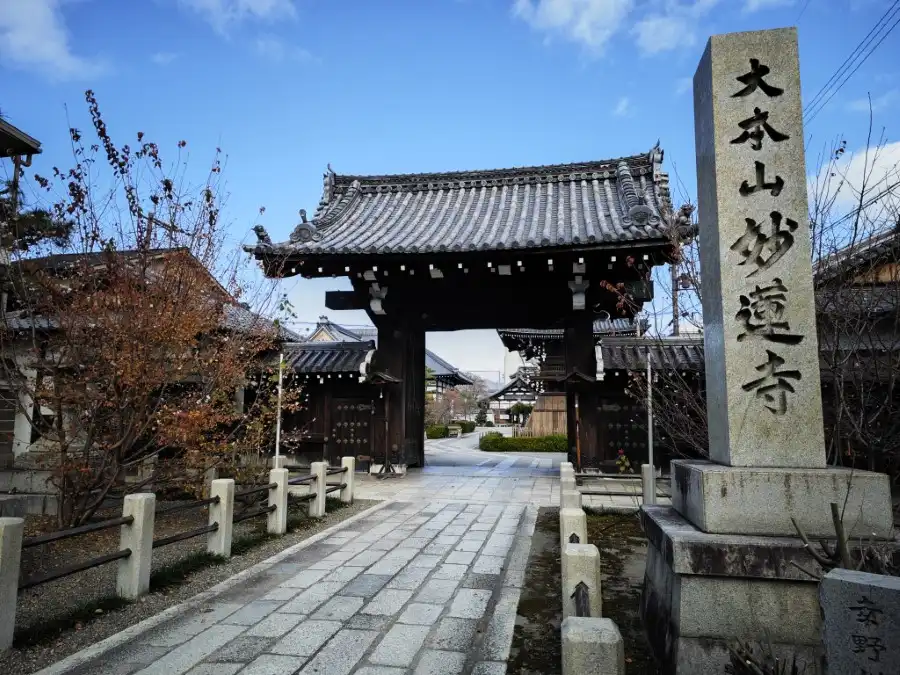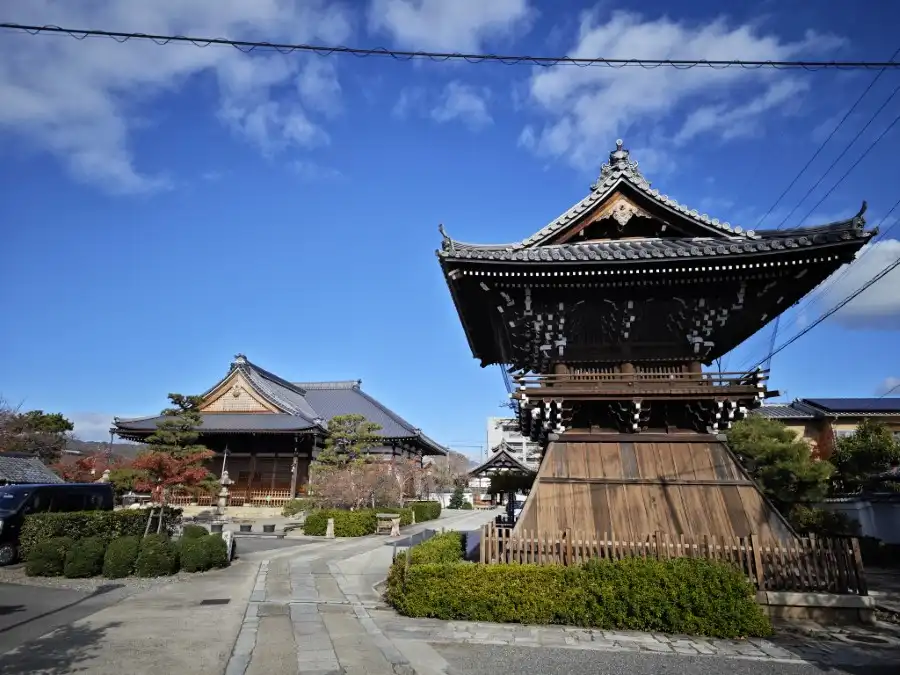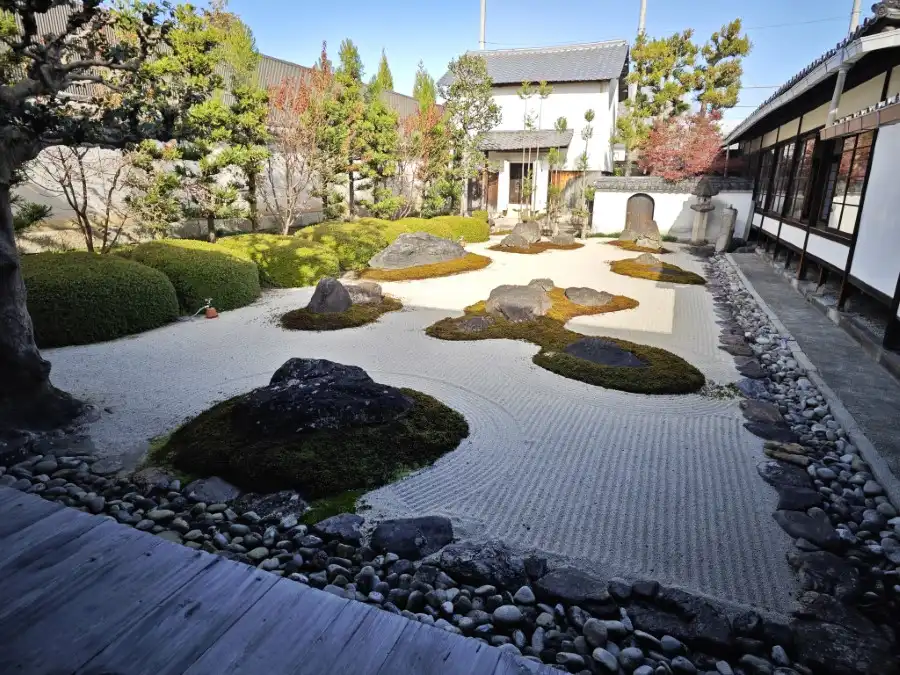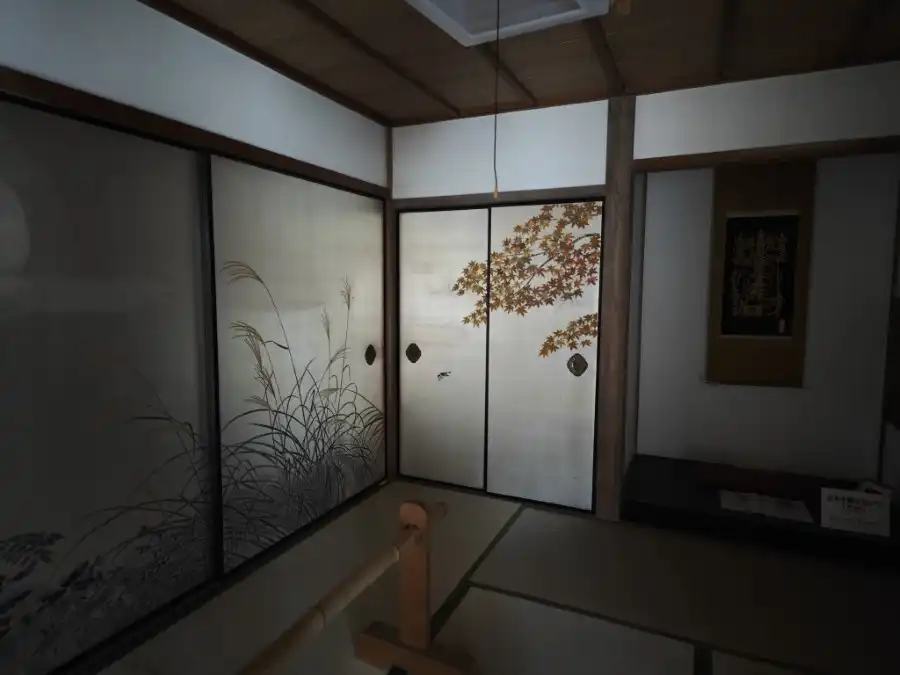Nestled in Kyoto, Myorenji Temple, founded in 1294, is a sanctuary of tranquility and cultural richness. As the head temple of the Honmon Hokke school of Buddhism, it boasts a storied past marked by resilience against attacks in 1536. Rebuilt in 1542 and relocated by Toyotomi Hideyoshi in 1587, the temple now stands as a testament to history. Explore the captivating “Stone Garden of the Sixteen Arhats,” where each stone tells a tale, including a gift from Toyotomi Hideyoshi. Admire cultural treasures like sliding door paintings by Hasegawa Tohaku, accessible by pre-arrangement, promising a serene and culturally enriching Kyoto experience.
Nichiren Daishonin, the founder of the sect, entrusted Nichizo Shonin with missionary work in Kyoto. And in 1294, Nichizo founded Myorenji Temple. This temple is the head temple of the Honmon Hokke school of Buddhism. This sect is a branch of Nichiren Buddhism, with Nichiryō as its founder of the sect.
Initially named Myohorenji Temple, it was later abbreviated to Myorenji Temple.
In 1536, monks from various sects, led by the Tendai sect on Mount Hieizan, who were jealous of the prosperity of the Hokke sect, attacked the temple. Myorenji Temple and 21 other temples under Nichiren Shonin were all reduced to ashes and evacuated to Sakai.
In 1542, the temple was reconstructed in Omiya, Kyoto. In 1587, the temple moved to its current location when Toyotomi Hideyoshi built the Juraku-dai.
At that time, it was a large temple with 27 sub-temples within its precincts. But a fire in 1788 had destroyed most of them. Only the treasure house and bell tower remained. The temple has gradually recovered and now has eight sub-temples.


Stone Garden of the Sixteen Arhats
The temple has a dry landscape garden. The name of the garden is the “Stone Garden of the Sixteen Arhats.” There Sixteen stones are placed in the garden. The largest stone is Gagyu-seki (stone of a reclining cow). According to legend, Toyotomi Hideyoshi gave this stone to the temple. The shape of the stone may represent the nirvana of the Buddha.

Of the sixteen stones, the largest stone represents the Buddha. Then the remaining stones are fifteen. There should be sixteen arhats, but where is the remaining one? It is you who are looking at the garden.
The temple also preserves cultural assets such as sliding door paintings by Hasegawa Tohaku. Contacting the temple in advance allows visitors to view the cultural treasures.


Nearby spots from Myorenji Temple
Myokakuji Temple was where Oda Nobunaga stayed several times. Its garden is famous for red maple trees in autumun.
Related articles:
[…] Myorenji temple is another important Nichiren sect head temple. It has a dry landscape garden. The name of the garden is the “Stone Garden of the Sixteen Arhats.” […]
[…] this area, there are other important temples of Nichiren sects such as Myorenji Temple and Myokakuji […]
[…] Myorenji Temple is a five-minute walk to the northwest. Myorenji temple has a dry landscape garden. The name of the garden is the “Stone Garden of the Sixteen Arhats.” […]
[…] Myorenji Temple has a dry landscape garden. The name of the garden is the “Stone Garden of the Sixteen Arhats.” […]